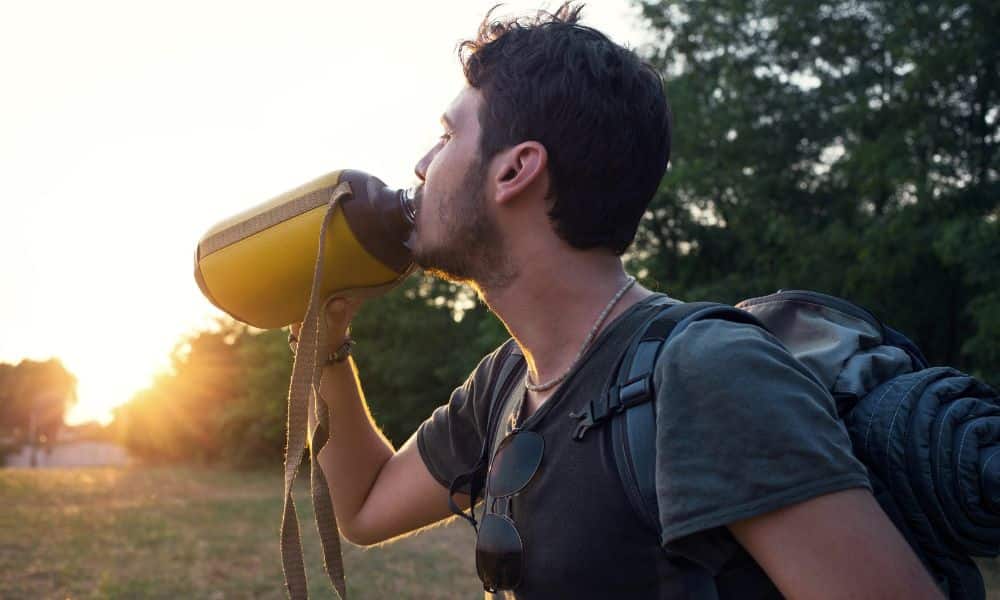Staying cool can be challenging When you’re backpacking, especially during the hot summer months.
The heat can cause discomfort, fatigue, and even heat exhaustion.
However, with the right preparation and gear, you can stay cool and comfortable throughout your trip.
One of the most important things you can do to stay cool while backpacking is to stay hydrated.
Even if you don’t feel thirsty, make sure you drink lots of water throughout the day.
Dehydration can make you feel hotter and more fatigued, so keeping your body hydrated is important.
Like, very important.
You can also bring electrolyte tablets or powder to add to your water to help replace the minerals lost through sweat.
Another way to stay cool is to wear lightweight, breathable clothing.
Choose fabrics like cotton, linen, or synthetic materials that wick away moisture and allow air to circulate.
Avoid dark colors and opt for lighter, brighter colors that reflect sunlight.
Wearing a hat or bandana can also help protect your head and neck from the sun.
With these tips in mind, you can enjoy your backpacking trip without feeling overheated or uncomfortable.
How to Stay Cool While Backpacking
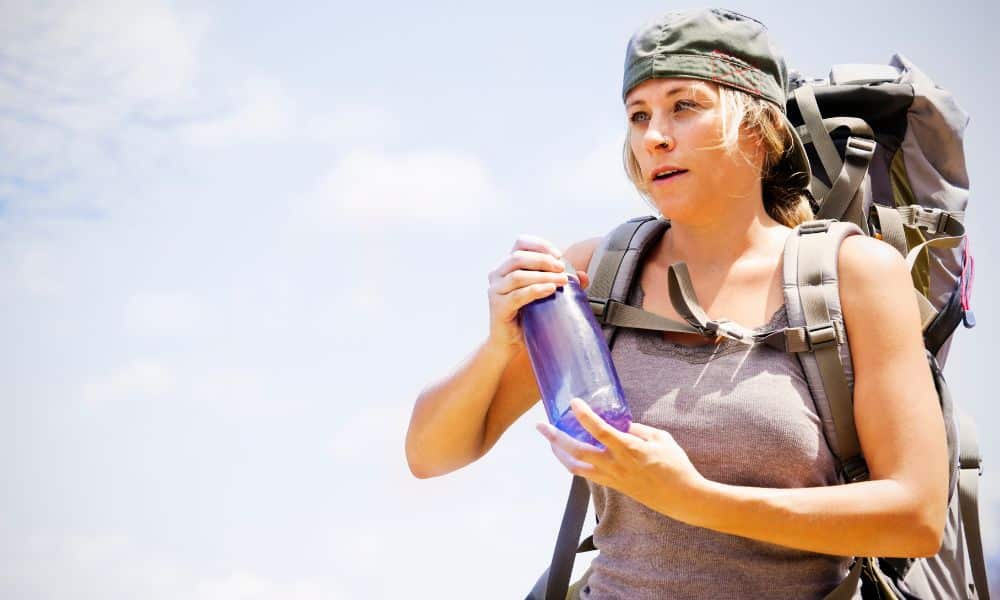
If you want to stay cool while backpacking, there are a few things you need to understand.
Most people head out without understanding what backpacking is about and they end up making it an unenjoyable experience.
Backpacking is one of the best activities to do outdoors, but it does come with its fdlkasjkldjaskljsa
What is Backpacking?
Backpacking is a popular outdoor activity where you carry all of your necessary gear and supplies on your back and hike through the wilderness.
It is a great way to explore nature and challenge yourself physically and mentally.
Backpacking can range from a day hike to a multi-day trip and can take place in a variety of environments, from mountain ranges to deserts.
Why Staying Cool is Important
When backpacking, it is important to stay cool to prevent heat exhaustion, heat stroke, and other heat-related illnesses.
Your body needs to maintain a core temperature of around 98.6°F (37°C), and when you are exposed to high temperatures, your body can struggle to regulate its temperature.
This can lead to dehydration, fatigue, dizziness, and other symptoms that can be dangerous in the wilderness.
To stay cool while backpacking, there are several things you can do.
First, make sure to wear light-colored, loose-fitting clothing that allows for airflow.
This will help to reflect the sun’s rays and help you stay cool while backpacking.
Second, stay hydrated by drinking plenty of water and electrolyte-rich fluids.
Third, take frequent breaks in the shade or in cool areas to rest and cool down.
Finally, plan your hiking schedule around the hottest parts of the day, and consider hiking during the early morning or late afternoon when temperatures are cooler.
By understanding the basics of backpacking and the importance of staying cool, you can have a safe and enjoyable trip through the wilderness.
Choosing Backpacking Gear
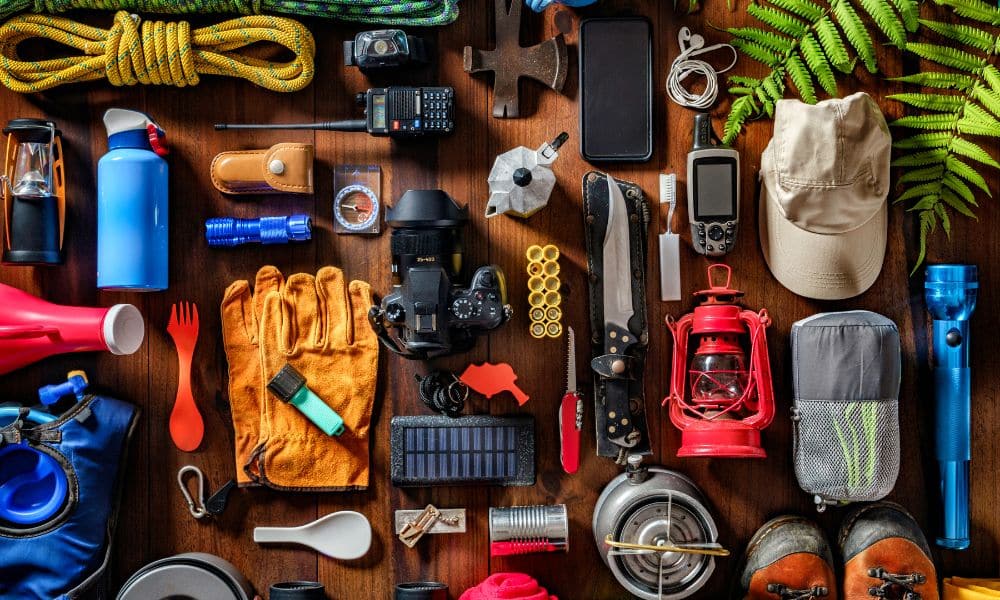
When it comes to backpacking, choosing the right gear is crucial to staying cool and comfortable on the trail.
Here are some tips for selecting the right backpack, clothing, and footwear.
Backpack
Choosing the right backpack is important to ensure that you can comfortably carry all of your gear.
Look for a backpack that fits your body well and has adjustable straps to distribute weight evenly.
A backpack with a mesh back panel can also help keep you cool by allowing air to circulate.
Consider the size of your backpack as well.
A smaller backpack may be sufficient for a day hike, while a larger backpack is necessary for multi-day trips.
Look for a backpack with plenty of pockets and compartments to keep your gear organized and easily accessible.
Clothing
Choosing the right clothing is essential to staying cool while backpacking.
Opt for lightweight, breathable fabrics that wick away sweat and moisture.
Avoid cotton, as it retains moisture and can lead to chafing and discomfort.
Consider packing layers, including a lightweight rain jacket or windbreaker for unexpected weather changes.
A hat or bandana can also help protect your face and neck from the sun.
Footwear
Choosing the right footwear is important to prevent blisters and keep your feet cool and dry.
Look for hiking boots or shoes with breathable mesh uppers and sturdy soles for traction on uneven terrain.
Make sure to break in your footwear before hitting the trail to prevent blisters and discomfort.
Consider packing extra socks to change into throughout your trip to keep your feet dry and comfortable.
By choosing the right backpack, clothing, and footwear, you can stay cool and comfortable while backpacking.
Hydration and Nutrition
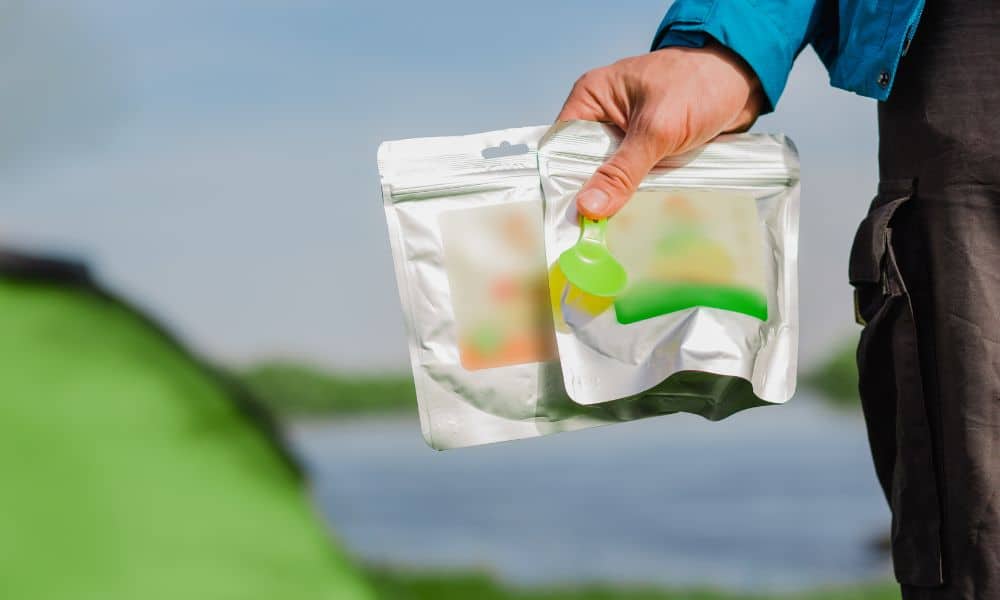
What you eat and drink is very much important if you want to stay cool while backpacking.
Pack the wrong foods and you might end up hurting yourself more than you think
Get the right nutrition and hydrate properly, and you can bet that you will stay cool while backpacking.
Water Purification
When backpacking, it is essential to stay hydrated to avoid dehydration and heat exhaustion.
However, you cannot always rely on natural water sources to be safe for consumption.
Therefore, it is crucial to bring a water purification system with you.
There are several options for water purification, including:
- Water filters: These remove impurities and bacteria from the water using a physical barrier.
- Water purifiers: These use chemicals or UV light to kill bacteria and viruses.
- Water treatment tablets: These dissolve in the water and kill bacteria and viruses.
Whichever method you choose, make sure to follow the instructions carefully to ensure proper purification.
It is also a good idea to bring extra purification tablets or a backup method in case of equipment failure.
Food Selection
Proper nutrition is also essential when backpacking.
Choose foods that are high in protein and carbohydrates to keep your energy levels up.
Some good options include:
- Trail mix: A mix of nuts, dried fruit, and chocolate provides a good balance of protein and carbohydrates. I mean, who doesn’t like Trailmix?
- Jerky: Beef or turkey jerky is high in protein and easy to pack.
- Energy bars: Look for bars that are high in protein and carbohydrates but low in sugar.
It is also important to pack food that is lightweight and easy to prepare.
Instant oatmeal, freeze-dried meals, and dehydrated fruits and vegetables are all good options.
Make sure to pack enough food for the length of your trip and bring extra in case of emergencies.
Overall, staying hydrated and properly nourished is crucial for a successful backpacking trip.
Choose your water purification system and food carefully to ensure a safe and enjoyable experience.
Backpacking Techniques
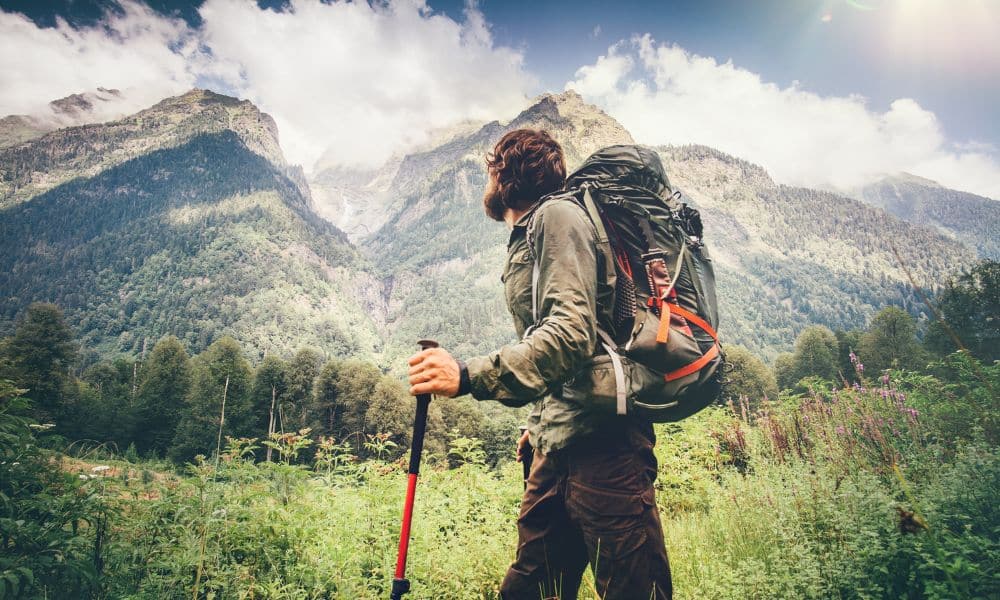
When backpacking in hot weather, it is important to use proper techniques to stay cool and prevent heat exhaustion.
Here are some techniques to keep in mind:
Pacing
The key to avoiding overheating while backpacking is to maintain a steady pace.
Avoid pushing yourself too hard, especially during the hottest parts of the day.
Slow down and take breaks as needed.
Try to walk in the shade whenever possible, and take advantage of any natural cooling sources such as rivers or streams.
Resting
Resting is an important part of backpacking, especially in hot weather.
It’s also necessary if you want to stay cool while backpacking.
Take frequent breaks to rest and rehydrate.
Try to find a shady spot to rest, and remove your backpack to allow air to circulate around your body.
Use a lightweight, breathable hat to protect your head and face from the sun.
When resting, make sure to drink plenty of water.
Bring a water filter or purification tablets to treat water from natural sources.
Avoid drinking from stagnant water sources, as they may contain harmful bacteria.
By pacing yourself and taking frequent breaks, you can stay cool while backpacking and avoid heat exhaustion in hot weather.
Remember to stay hydrated and take advantage of natural cooling sources whenever possible.
Coping With Heat
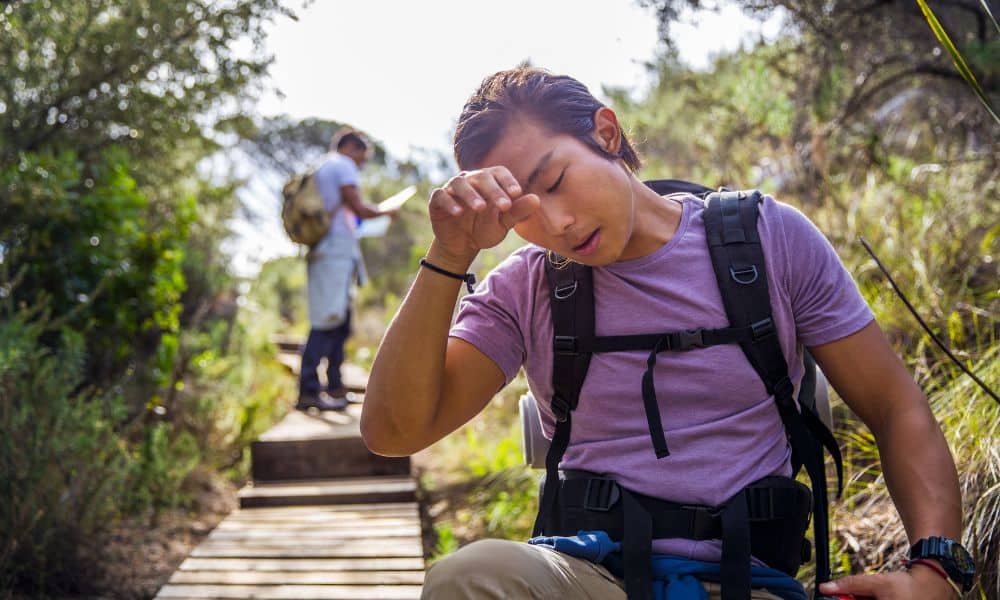
Dealing with heat is not that easy and it gets even more complicated when you include something like backpacking.
Here are some tips to help you deal with heat while backpacking:
Heat Acclimatization
If you’re planning a backpacking trip during hot weather, it’s important to acclimatize your body to the heat before you hit the trail.
I mean, this is beyond important.
This means gradually exposing yourself to higher temperatures over a period of time.
And no, a week is not considered a long time.
You can start by spending time in a sauna or hot tub, or simply spending more time outdoors during the hottest part of the day.
It’s important to note that heat acclimatization can take several days to several weeks, depending on your body and the climate you’re in.
Be patient and take it slow.
Don’t push yourself too hard too quickly, or you could end up with heat exhaustion or heat stroke.
Recognizing Heat Illness
Even if you take all the necessary precautions, it’s still possible to suffer from heat illness while backpacking.
Heat exhaustion and heat stroke are the two most common forms of heat illness, and both can be serious if left untreated.
Symptoms of heat exhaustion include:
- Heavy sweating
- Dizziness
- Weakness
- Nausea or vomiting
- Muscle cramps
- Headaches
If you experience any of these symptoms, stop hiking immediately and rest in a cool, shaded area.
Drink plenty of water or sports drinks, and remove any excess clothing or gear that may be trapping heat.
Symptoms of heat stroke include:
- High body temperature (above 103°F)
- Rapid pulse
- Rapid breathing
- Confusion or disorientation
- Seizures
- Loss of consciousness
If you experience any of these symptoms, seek medical attention immediately.
Heat stroke can be life-threatening if not treated promptly.
Remember, prevention is the best way to avoid heat illness, and is essential to stay cool while backpacking.
Stay hydrated, take frequent breaks in shaded areas, and avoid hiking during the hottest part of the day.
With the right preparation, you can stay cool and comfortable while backpacking in hot weather.
Conclusion – Follow These Tips and Stay Cool While Backpacking
In conclusion, staying cool while backpacking is essential to ensure you have an enjoyable and safe experience.
By following the tips and tricks outlined in this article, you can beat the heat and keep your body hydrated and cool.
Remember to prioritize staying hydrated by drinking plenty of water and electrolyte-rich drinks.
Wear lightweight, breathable clothing that wicks away sweat and protects you from the sun.
Use a hat, sunglasses, and sunscreen to protect your skin from harmful UV rays and to prevent sunburn.
If you’re camping, choose a shaded campsite and set up your tent in a way that maximizes airflow.
Consider using a tent fan or portable air conditioner to keep the air circulating.
Use a cooling towel or bandana to keep your body temperature down.
Finally, be mindful of the signs of heat exhaustion and heatstroke.
If you experience symptoms such as dizziness, nausea, or confusion, stop and rest in a shaded area.
Seek medical attention if your symptoms persist or worsen.
By following these tips, you can stay cool while backpacking along with being comfortable, allowing you to fully enjoy the beauty of the great outdoors.

